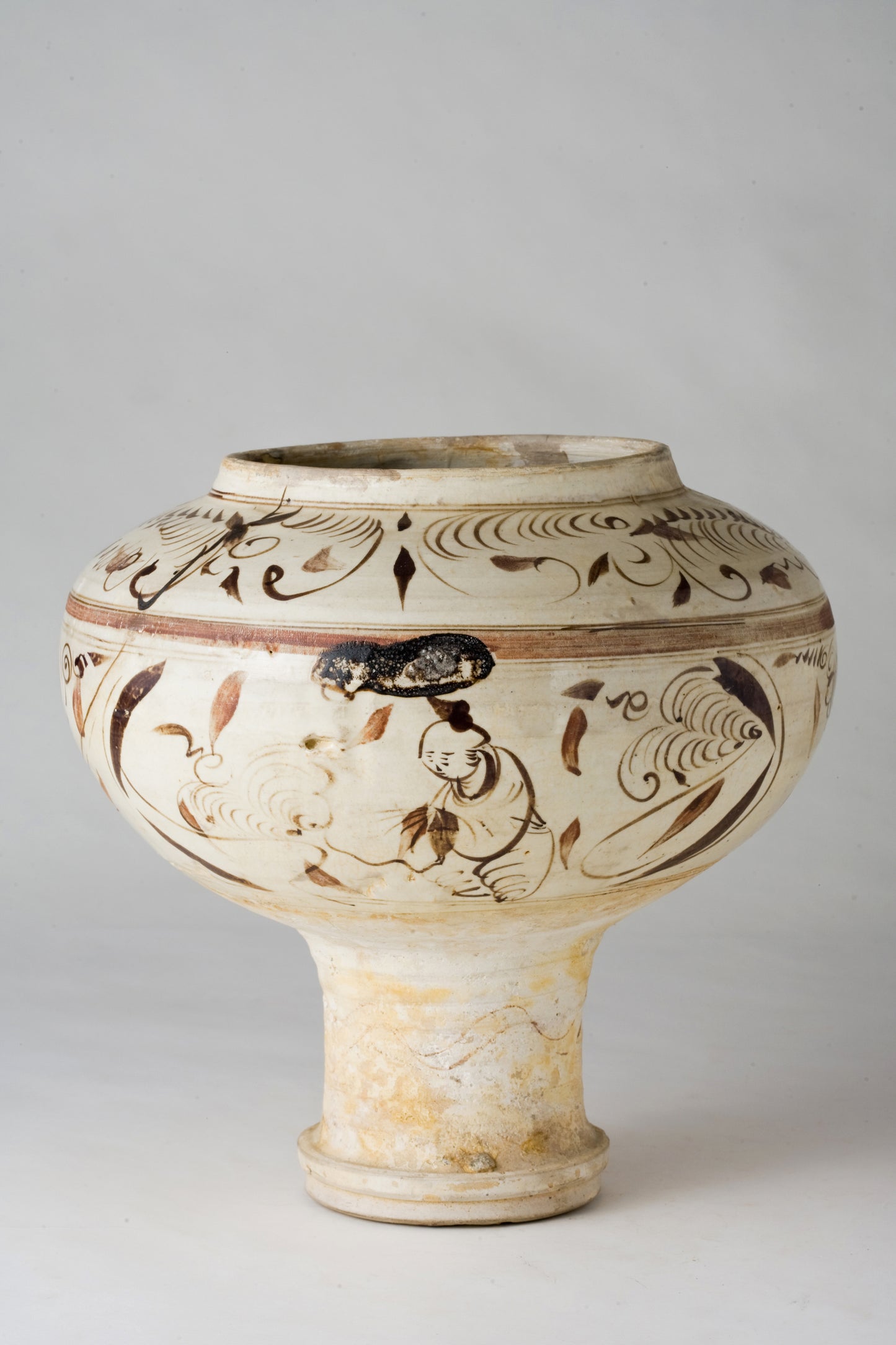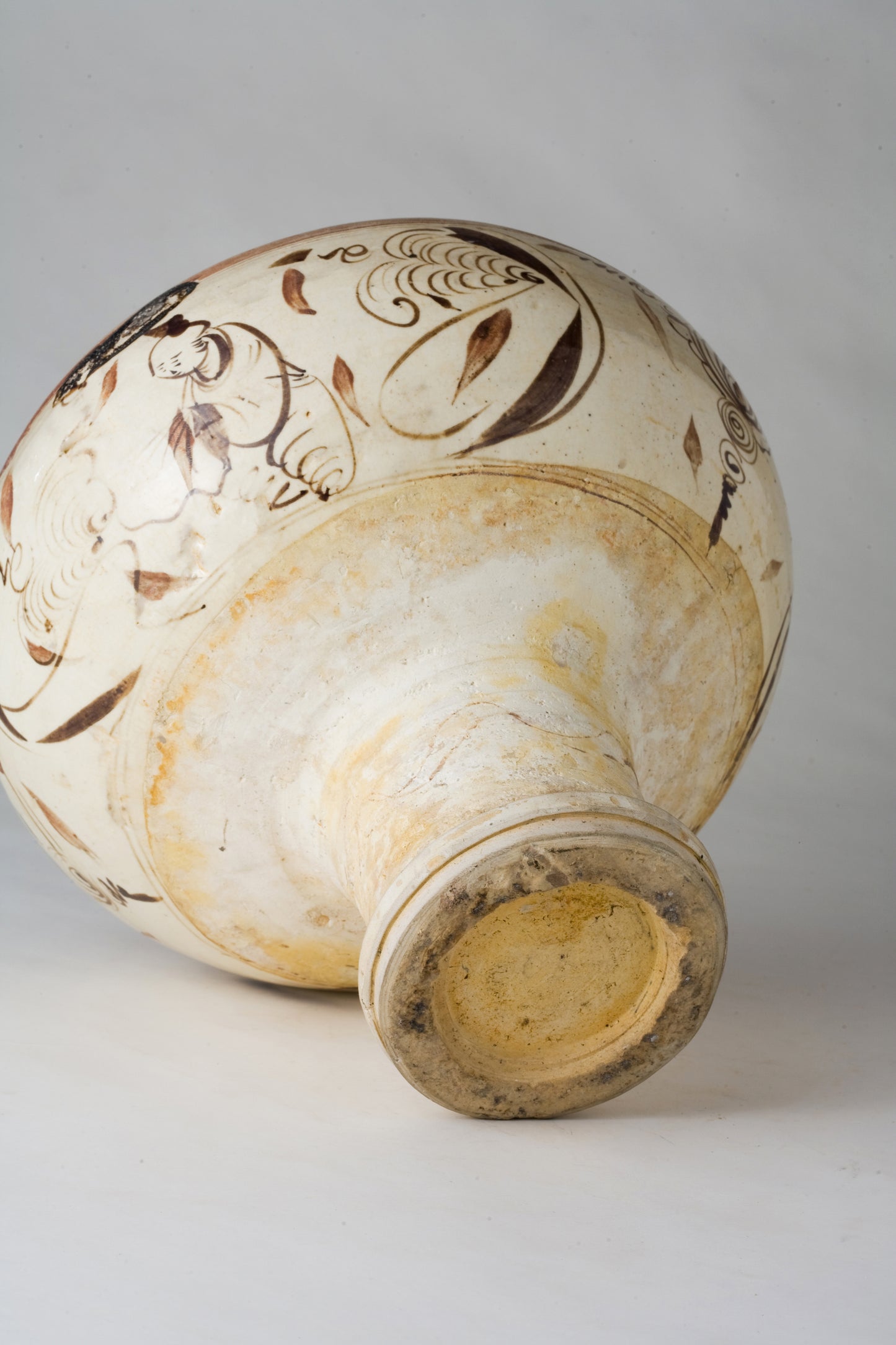Cizhou Baluster Jar, Yuan Dynasty
Cizhou Baluster Jar, Yuan Dynasty
Couldn't load pickup availability
The vase features a broad, rounded body with a slightly flared neck and a pedestal base. The decoration consists of intricate brushwork in iron-brown pigment, depicting figures and swirling motifs that are typical of the Cizhou style. The glaze has a creamy white background, providing a stark contrast to the dark brown designs. The vase's form and decoration reflect the artistic trends of the Yuan period, showcasing the craftsmanship and aesthetic preferences of the time.
Period : Yuan-Ming Dynasty(13th-16th century)
Type : Baluster vase
Medium : Cizhou Ware
Size : 27.0 cm(Height), 15.5cm(Mouth Diameter)
Condition : Good
Provenance : Acquired in late 1990s from Hongkong
Reference
1) Christies Newyork 7–24 JUL 2020 - Chinese Ceramics and Works of Art - Lot 59
(Price realised : 30,000 USD / Type : related)
https://onlineonly.christies.com/s/chinese-ceramics-works-art/large-cizhou-type-painted-baluster-jar-59/90541
2) Christies Hongkong 4–12 APR 2018 - Pavilion Online: Chinese Art
(Price realised : 25,000 HKD / Type : related)
https://onlineonly.christies.com/s/pavilion-online-chinese-art/cizhou-painted-figural-jar-76/54119
* Cizhou Ware
Cizhou is the name given to a number of stonewares, grey or buff, of varying degrees of hardness, with painted, incised or carved decoration on a clay slip. These stonewares were not only made in the region of Cizhou, Hebei Province, but in several provinces of China during the Song, Yuan and Ming periods. The great centres of production were in the north of China in the provinces of Hebei, Henan and Shanxi.
Cizhou wares seem to have been very popular, made for a clientèle of rich merchants, at a period when the paintings of famous artists adorned the walls of tea houses of the capital. While this type of pottery did not apparently attract Chinese collectors of the 18th and 19th centuries, it was much appreciated by the Japanese as a kind of folk art, for its rustic look. Nowadays Cizhou fetch very high prices at public auctions.
In the past fifty years, kilns producing Cizhou wares have been identified and excavated. This has made it possible to know the exact origin of certain types and to study the evolution of the ware.
Song potters used several methods of decorating Cizhou: vases, jars, pots, boxes and pillows. Champleve decoration appears at the beginning of the Song period in Henan at Dengfengxian and at Xiuwu. This method consisted of covering the vessel with a white slip, then carving and incising the design as to expose the brown of the body below. The whole surface was then glazed. After firing, the brown of the body formed a striking contrast with that of the glaze covering the white slip. Sometimes the design stands out against a ground of little circles stamped with a metal or bamboo tool. This decoration was often used on Tang metalwork. A variant of the technique used in the 11th century consisted of incising the little circles through the slip, then filling the lines with brick-red paint. The object, generally a pillow or cup, was then glazed. In another type of decoration called sgraffito, two layers of slip were placed one over the other, a brown slip, for example, over a white one, or vice versa over the parts destined for decoration; then the design was drawn by incising and scratching the upper layer, and the whole thing was covered with a transparent glaze.














